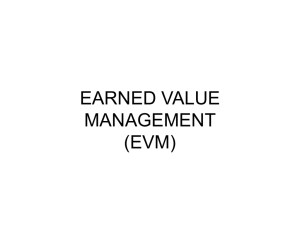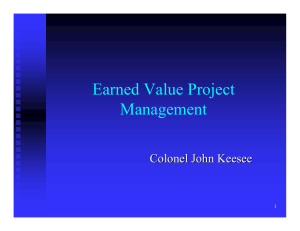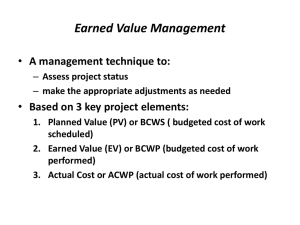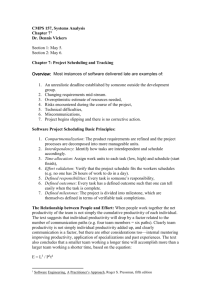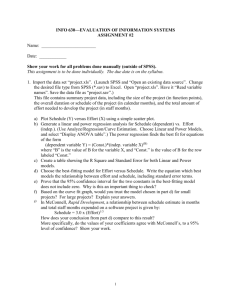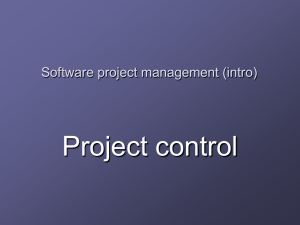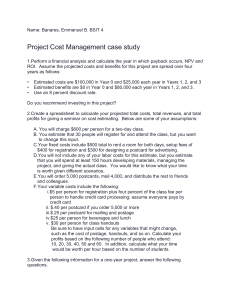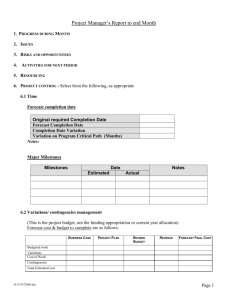Chapter 2 Project Management Methodologies
advertisement
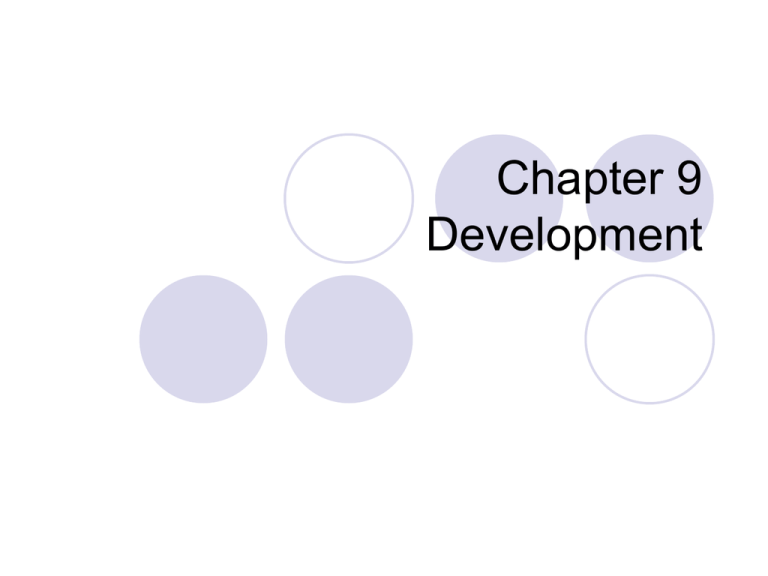
Chapter 9 Development Managing a set of items Client expectations Whatever documented need to be met If not clear, document Team Scope Score creep Feature creep Constraints The triple constraints Project requirements, resources (people time, cost, etc), and scope Obstacles and risks Changes Status Report Do Regularly Collect from bottom (team members) Send up To the stakeholders They do not need to know everything Need to be verified (sometimes) Tracking cost Budgeted cost of work scheduled (BCWS) Scheduled tasks Budgeted cost of work performed (BCWP) Completed tasks Actual cost of work performed (ACWP) Cost of all completed tasks Schedule variance (SV) = BCWP-BCWS Negative indicates you are behind schedule Schedule Perform Index SPI = BCWP/BCWS < 1 indicates you are behind schedule Cost variance CV = BCWP – ACWP Negative indicates you are over budget Cost performance Index CPI = BCWP/BCWS < 1 indicates you are over budget My project has a SPI of 1.21 and CPI of 1.11 – good or bad? My project has a SPI of 0.9 and CPI of 0.85 – good or bad? My project has a SPI of 1.21 and CPI of 0.91 – good or bad? Bring your project back on track Crashing Shorted the project by adding more resources Overtime Fast track Exploring concurrency Phased implementation Budget Stay within budget Have enough $ to start with Have a process to control $ Where to cut/reduce budget Cut people Improve process Remove dependencies ASAP Reduce non labor cost Use contingency budget Escalating and do less Not good for budget activities IT costs Requirement changes Org changes Un-realistic budget

